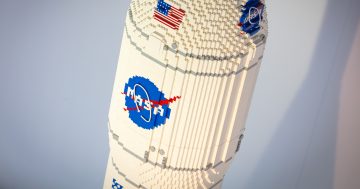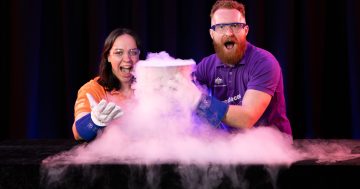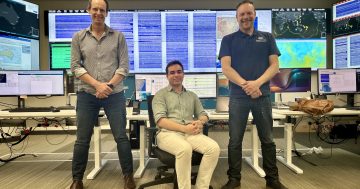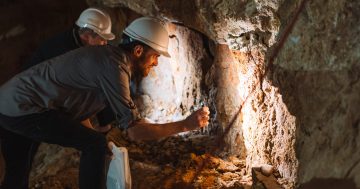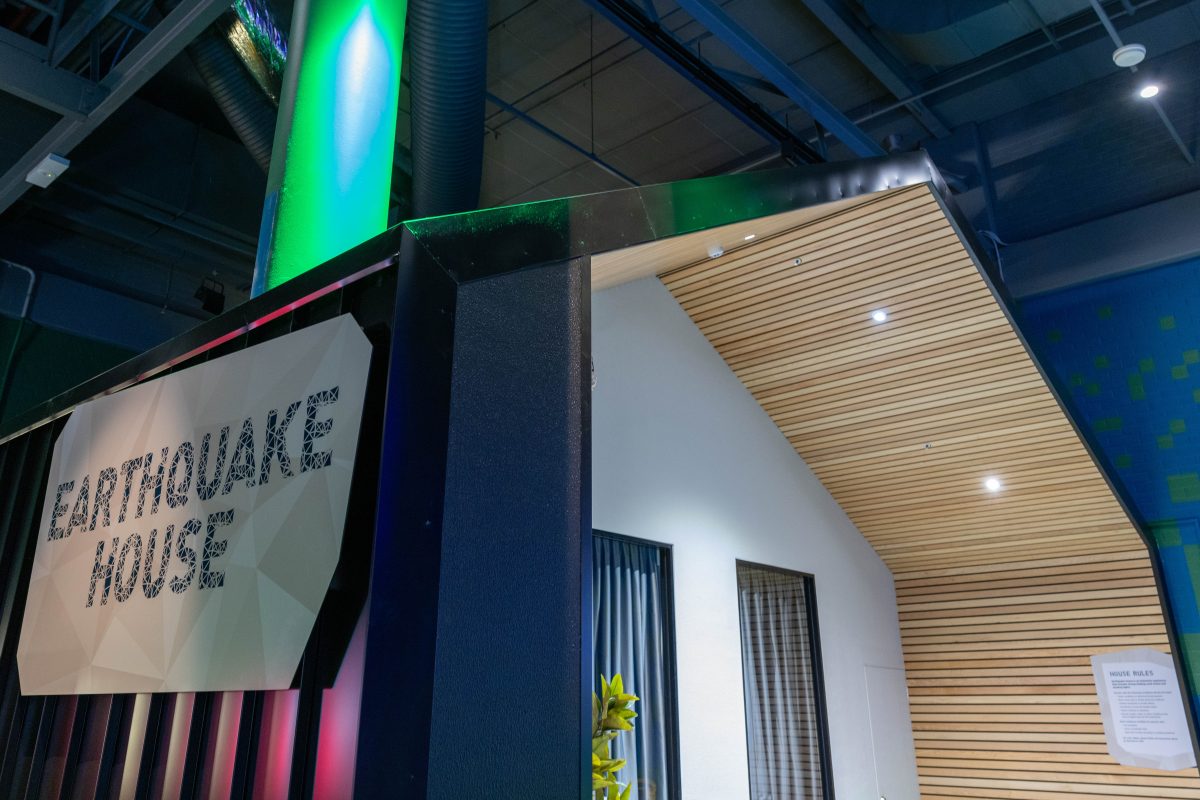
Yep, the Earthquake House is back and open today! Photo: Questacon.
It’s been 10 years since Canberrans have been able to experience what it’s like to be in an earthquake (and no, we’re not counting those times your outdoor chair fell over during a magnitude-3.2 shudder in Wee Jasper).
One of the best attractions of Questacon is back, now “reimagined with ground-breaking new science and technology”.
You’ll remember the original ‘Earthquake House’, part of the ‘Forces’ exhibition when Questacon first opened in 1988, although it was more of a moving platform fitted with seats.
In 2004, when Forces morphed into ‘Awesome Earth’, it was enclosed as a mock house, designed to give visitors “the chance to experience what it may have felt like to be in a house during the deadliest recorded Australian earthquake – the 1989 Newcastle earthquake”.
It quickly became a hit, with its choreographed lighting and physical special effects, including a wall that cracked open and a falling cabinet.
However, in 2014, it was replaced by ‘Earthquake Lab’, where visitors could build different structures on different surfaces to see if they could withstand the shaking forces of an earthquake or remain standing in a mock ‘liquefaction pit’.
“Fans of the original Earthquake House can rest assured – you will still feel the effects of an earthquake,” Questacon said at the time.
But equipped with Federal funding from the May 2023 budget and a strategic priority to “enhance the onsite offer”, the centre announced plans to bring it back last year. The new house reopens today (19 July).
Questacon director Jo White said the decision to “revisit the Earthquake House concept was based on our key mission here at Questacon, to make science and technology fun through hands-on engaging, exciting and emotional experiences”.
“We wanted to bring back the excitement and emotion of the old Earthquake House, so after 10 years and thousands of shakes, this exhibition required renewal,” Ms White explained.
Designed and fabricated by Questacon’s in-house team, it invites visitors into a typical suburban home of today to experience an earthquake, simulated using state-of-the-art special effects and more than 30 practical and audio-visual effects.
“I love the 30 special effects, which add to the excitement and emotion of the experience,” she said.
“In addition to the hydraulic shaking platform that visitors stand on, some of the special effects in the Earthquake House include shaking furniture and shelves filled with objects that react and fall during the earthquake – along with flickering lights and sound effects and a ‘digital window’ that visitors can look through to see how the earthquake might affect the neighbourhood ‘outside’ the Earthquake House.”
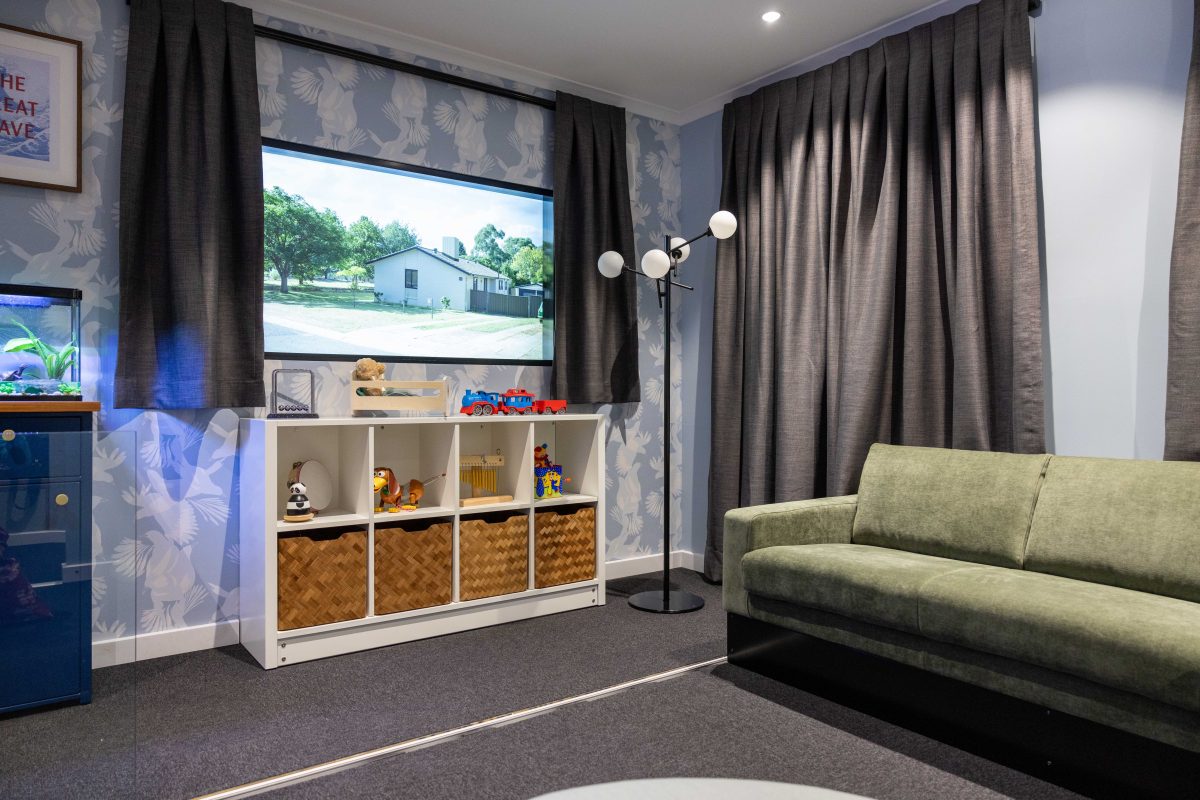
Inside the Earthquake House – complete with digital view. Photo: Questacon.
Where the previous experience opened with a mock report by former WIN News newsreader Peter Leonard on the wall-mounted TV, the new house includes “dramatised and simulated footage” presented by Nate Byrne, weather presenter on the ABC News Breakfast show.
A technical criticism of the old house was that it only rocked side to side (by about five centimetres), unlike a real earthquake, which also includes up and down motion. Geoscience Australia, which was involved in the development, said this has been rectified in the new house.
“When an earthquake occurs, seismic waves that propagate through the earth’s interior result in complex ground movements in all three dimensions – east to west, north to south, and up-down,” earthquake scientist Dr Tanja Pejic told Region.
“The new Earthquake House uses the already existing platform to produce the shaking. However, the team at Questacon were able to obtain a specific mechanical device, which – when attached to the platform – allows the amount of displacement to vary over time, and this makes it more realistic in terms of replicating the ground motions in an earthquake.”
Scientists and the technical team from Geoscience Australia will continue to work with Questacon so the house can replicate the movements from various historical earthquakes.
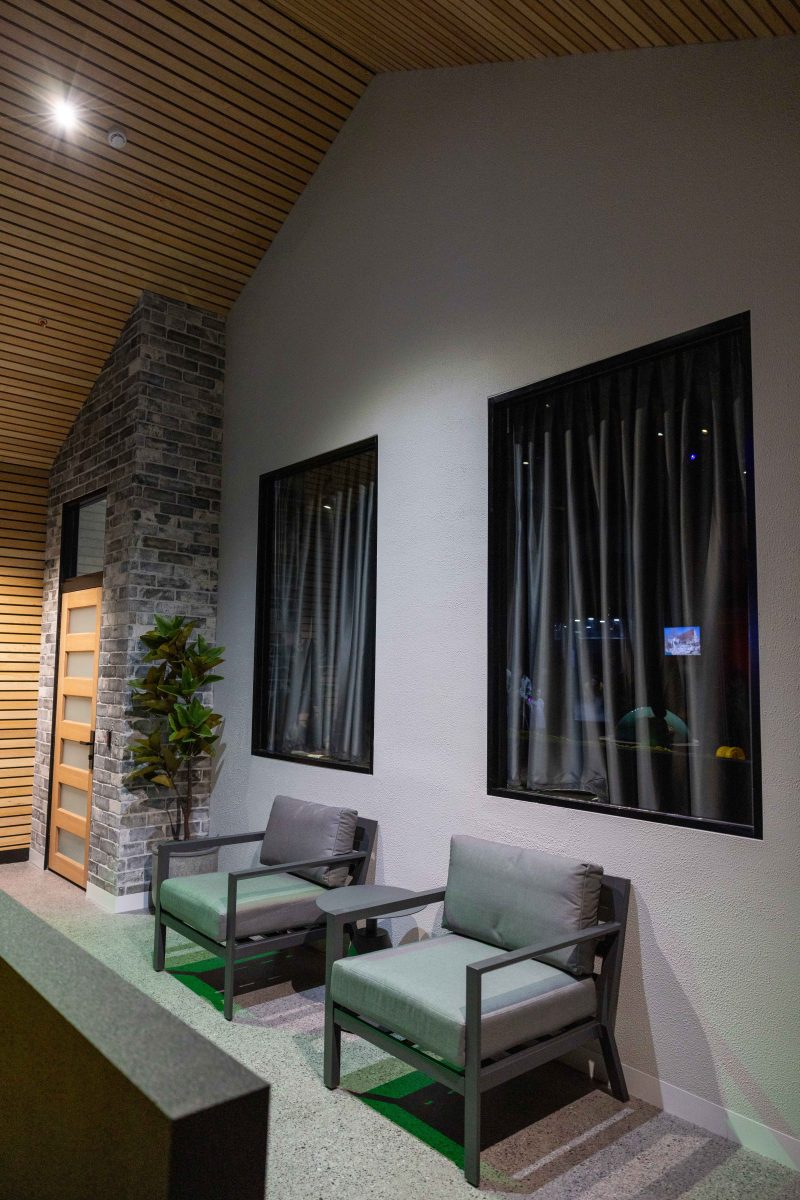
The front porch. Photo: Questacon.
“The Questacon team will then be able to pre-select a representative earthquake and program the platform to ‘playback’ the recorded signal,” Dr Tanja Pejic said.
“Since the real signal was recorded at a certain distance from the epicentre, the whole platform will move as if it was located at that distance from the representative earthquake.”
The Earthquake House is located in Questacon’s Awesome Earth gallery. The experience takes five minutes and has capacity for 12 people. Earthquake House cannot be booked and is included with general admission to Questacon. Pre-purchasing admission is recommended.
Visit Questacon for more information, including ticket prices. Questacon is open daily from 9 am to 5 pm.
Original Article published by James Coleman on Riotact.


